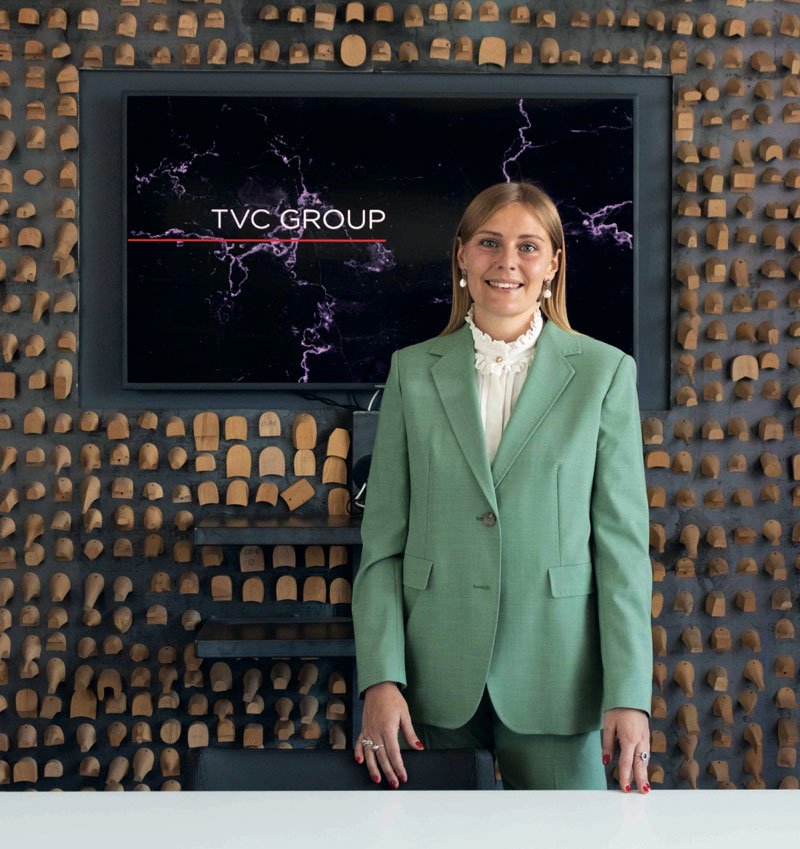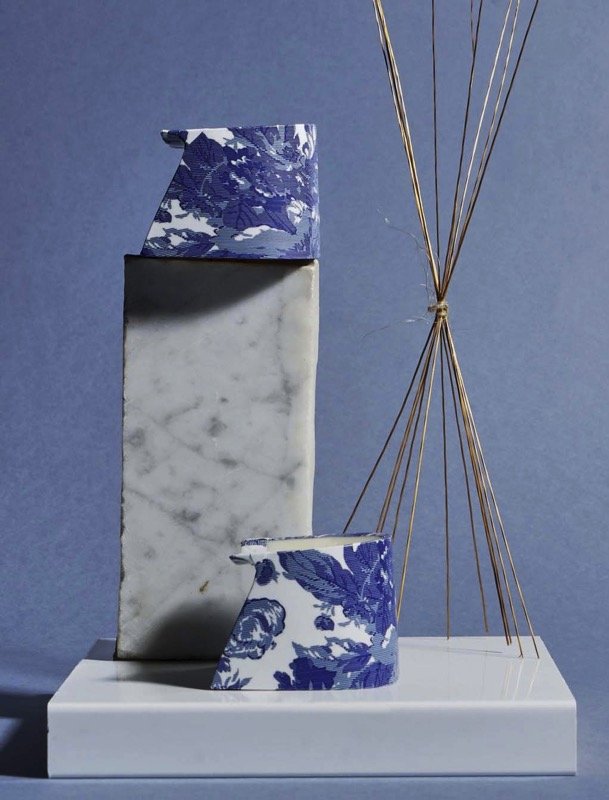Interview with Silvia Paganini, Sales and Marketing Director of Tacchificio Villa Cortese, who reveals the secret behind the evolution of the family business
High-heeled shoes have always been a favorite of fashionistas and working women. As, in recent years, office dress codes relax slightly and streetwear trends shift toward extreme customization, sophisticated consumers are increasingly opting for unusual heels that highlight their personality and style. Designers, and creatives in general, can take advantage of this opportunity to appeal to a growing niche market by reworking the traditional heel in innovative ways. This is because technological innovation is possible even in an industry such as high heels that, for nearly 80 years, has not experienced any real transformation. This has not been the case for a few years now, thanks to new generations capable of bringing new approaches to companies and a growing market pushing towards eco-sustainable solutions.
Your name is linked to an anecdote that has its roots in history, but despite the years that have passed, your company has been able to evolve and keep up with the times by investing in technological research and all the alternative equipment for making heels for big fashion houses.
“The company was founded by my grandfather, Luigi Gazzardi, in 1961. After a long experience as a designer in a heel factory, he decided to establish his own business at the end of the 1950s. In those years-hence then the anecdote about the company’s name- he was also chairman of the committee that promoted the self- government of Villa Cortese, which was then only a district. Later he was also the mayor of the municipality. His strong belonging to the area and his roots led him to use the very name of the place where he lived.”
A beautiful story that also appealed to you, because you have kept this name …
“Yes, also because at that time, where the company arose, there was no housing. Over time, the municipality expanded and, instead today, the company is located in the middle of the urban landscape. Calling ourselves Villa Cortese, today as then, is a source of pride for us and pushes us day by day to do our best to try to give back what the community and the territory has given us in terms of opportunities and value. Consequently, it is also crucial to have a focus on the impact we have on the locality, which is why we constantly keep environmental and noise pollution indices monitored and under control. One of our strengths has always been sustainability, and also from this point of view, we try to continuously improve.”
What is your relationship with citizens?
“Villa Cortese, like that of the upper Milan area, is a manufacturing community, and the factory is a fundamental part of the social fabric. Many people have been working with us for generations. Our philosophy is to always be there for the community, with which we are closely interconnected.”
Let’s talk about innovation…
“Innovation has always been one of our focal points. When our parents joined the company during the 1980s, the first major changes were made, particularly plastic molding. Previously, in fact, the material in use was wood, which later, made way for plastic materials gradually becoming the niche product.”
What were the changes promoted by your generation?
“There was a period when all three generations lived together. We had several years of apprenticeship, although we knew the company dynamics well because it was talked about daily in the family. What we were trying to do was to direct the effort of everyone to research and development, and innovation. We focused on our product and our know-how, even at times when the heel was not the market trend, trying to further specialize in offering more and more accurate service to the customer, so as to anticipate what their needs might be. It is for this reason that we have been ahead of our time in terms of sustainability, both in terms of product and process. In fact, thanks to specific collaborations initiated with Universities and Research Institutions, we have implemented in-house research and development: product innovation is pursued through the investigation of alternative approaches designed to increase its value in terms of performance, sustainability and quality. Simulation software, laboratory instruments for materials specification and testing machinery are used for this purpose.”
What has been the most important technological innovation you have made in recent years?
“More than technology per se, it has been the approach to understanding innovation. Therefore innovation not only focused on the equipment, machinery or technology that goes into the business process, but above all on how to approach this whole revolution: we have promoted a data-driven approach that sees human capital at the center. Our idea is that the growth of the company should go in parallel with the growth of the people who work with us.”
How much does creativity matter and how much does the technical part count?
“Definitely the technical part is predominant for us, also if creativity is a fundamental characteristic in order to be able to offer a high level of consulting. Rather than considering which is more important, the key is to be able to find the perfect balance between the two.”
Sustainability, energy conservation and ecology: for an entity such as yours, where is it possible to take action?
“Precisely because we are within the urban core of the municipality these issues have always been very dear to us. For example, wood waste was originally used to heat production spaces. We never had the need to use gas in the company. Later, starting in 2009, we installed a geothermal system and a photovoltaic system (still in continuous expansion), which currently meet about 70 percent of our energy needs.
In general terms, we have always tried to approach sustainability as a structure-wide philosophy that translates into a development strategy. We see it as the highest form of respect towards our stakeholders and the highest form of responsibility, the moral even before the objective, towards future generations. We are committed to pursuing sustainability in all its areas: environmental, social and economic. We do this by starting from the characterizing aspects of Made in Italy: the quality of the product, designed and made to last over time; a traceable and all-Italian supply chain; production with low environmental impact and low waste, thanks also to preventive optimization tools that allow us to pre-engineer the product digitally; and packaging that minimizes environmental impact and waste production. On the product side as well, the direction is to develop materials that have a low environmental impact and are prepared for recycling or, already made from recycled materials. We have a number of materials in our portfolio that meet the specific mechanical needs of each type of product optimized from the perspective of sustainability. We have focused heavily on Fheel Green and Fheel Bio, two materials that are sustainability-improving compared to traditional ABS and can be used for all types of heels.”
Plans for the immediate future?
“We are focusing some of our energy on implementing customer service with a vision towards sustainability with the support of new technologies, such as blockchain and artificial intelligence. In addition, our research and development department is continuing to study, analyze and test innovative alternative solutions. We want to commit to playing our part in enhancing, stimulating and spreading ideas and knowledge with other players in the supply chain and to promote a sustainable and a high added-value growth model for all stakeholders.”

Silvia Paganini


